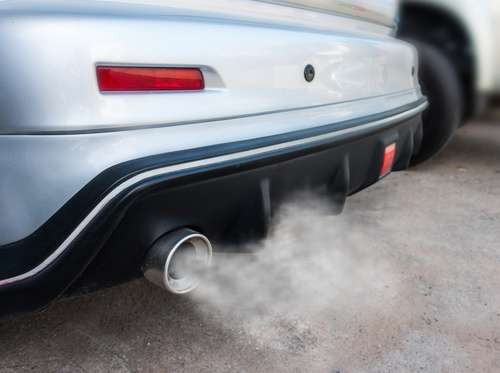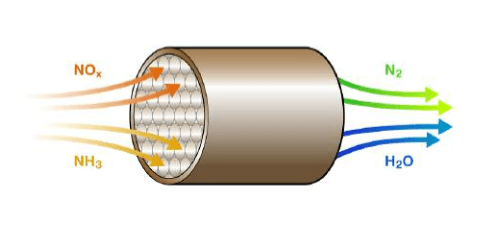
SCR (Selective Catalytic Reduction): Performance and Benefits
Selective catalytic reduction is a chemical reaction that converts nitrogen oxides into water vapor and nitrogen. On vehicles with a diesel engine, the SCR (selective catalytic reduction) system is located on the exhaust and reduces pollution in accordance with the requirements of the Euro 6 standard.
🔎 What is SCR system?

system SCR, for selective catalytic reduction, also called selective catalytic reduction In French. It is a technology that reduces emissionsnitrogen oxides (NOx) cars, trucks, as well as cars.
NOx are toxic greenhouse gases. They contribute significantly to atmospheric pollution and arise in particular from the combustion of fossil fuels such as gasoline, but especially diesel fuel.
Since its inception pollution protection standard Euro 6 In 2015, new thresholds for nitrogen oxide emissions were set for vehicles. The SCR system gradually became widespread and is now used in many vehicles.
Since 2008, since the previous Euro 5 standard was applied, trucks have been equipped with the SCR system. Today is the turn of the new diesel vehicles that have left the plant in recent years.
Selective catalytic reduction is a system that allows conversion of NOx to nitrogen and water vapor, ingredients that are harmless and completely natural. To do this, the SCR system performs a chemical reaction in the exhaust, the passage of nitrogen oxides and before they are released.
The SCR system then replaces catalyst classic, which is also used to convert polluting and toxic gases contained in exhaust gases into less harmful pollutants according to another type of chemical reaction: redox or catalytic.
⚙️ How does SCR work?

SCR is a type of catalyst. Selective catalytic reduction is a chemical reaction that converts NOx to nitrogen and water vapor to reduce nitrogen oxide emissions and therefore pollution from combustion in a heat engine.
For this, the SCR works thanks toAdBlue, a liquid that is injected by the system into the exhaust. AdBlue consists of demineralized water and urea. The heat of the exhaust gas turns AdBlue into ammonia, which creates the chemical reaction needed to convert nitrogen oxides to nitrogen and water vapor.
The SCR system requires installation AdBlue tank... This tank is designed for this fluid and is therefore optional for the vehicle: it is added to the fuel tank. It can be located next to the latter, at engine level or in the trunk of a car.
As AdBlue is gradually consumed by the SCR, it is necessary to top up fluid from time to time. This can be done in a canister or with an AdBlue pump at a workshop.
Since 2019, some vehicles have been equipped with the SCR Evolution System. Instead of one catalyst, the car has one. two : one near the engine, the other at the bottom. This allows for even better control of the emission of pollutants.
⚠️ What failures can SCR encounter?

An SCR system can, in particular, be subject to two types of failures:
- Le lack of AdBlue ;
- Theclogged catalyst SCR.
AdBlue is contained in a special tank, which on recent cars is usually located next to the fuel tank, with a cap under the filler cap. AdBlue consumption is approximately 3% diesel consumptionand a warning light comes on on the dashboard when you only have 2400 km left before it dries up.
If you do not add AdBlue, the SCR will stop working. But seriously, your car will be immobilized. You risk can not start.
Another problem with the SCR system, clogging, is related to catalyst performance, just like a conventional catalyst. As a result of a chemical reaction triggered by the system, cyanuric acid is produced, which can accumulate in the SCR. It then needs to be scraped off to clean the exhaust.
If your selective catalytic reduction system is contaminated, you will notice the following symptoms:
- Engine power drops ;
- The engine is choking ;
- Excessive fuel consumption.
In this case, do not wait for the SCR system to be cleaned. Otherwise, you will need to change it. However, SCRs are extremely expensive.
That's it, you know everything about SCR! As you already understood, this system has become widespread in a car on diesel vehicles for reduce their pollution... Today it has become an indispensable weapon in the fight against nitrogen oxides, gases with a strong greenhouse effect.
